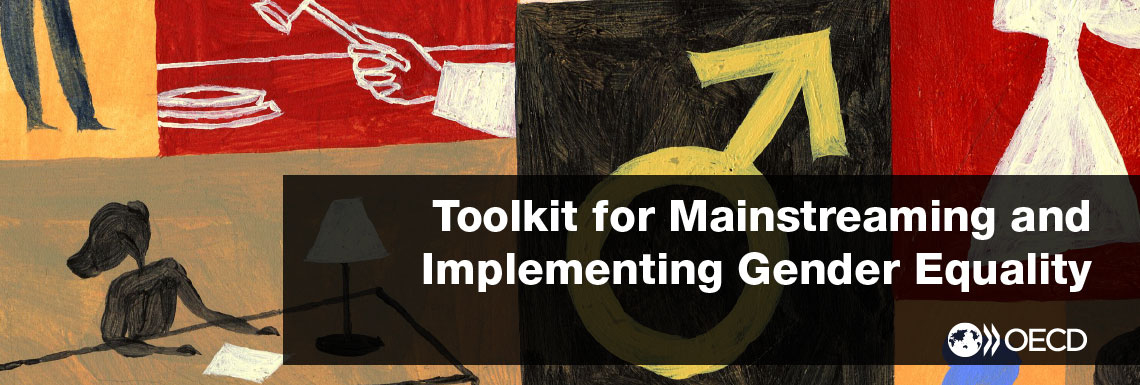Processes and tools are in place to enable gender mainstreaming in parliamentary processes and practices
SELF-ASSESSMENT QUESTION
- What tools and processes are gender mechanisms empowered and supported to employ?
- How effective are the processes and tools available to gender mainstreaming mechanisms?
WHY IS IT IMPORTANT?
A range of tools have been developed specifically for the use of parliamentary members and staff to guide gender mainstreaming efforts. Gender analysis allows a better understanding of the perspectives, interests and needs of women and men, girls and boys in order to make public policy more responsive and effective. It looks at relationships, access to opportunities, and access to and control over resources. It includes the preparation of research reports, the analysis of public policy and laws, and the scrutiny of government performance, in order to better understand the gender impact of policies, programmes, laws and initiatives.
Gender impact assessments also look at the impact of legislation and policy on women and men, girls and boys. Ex ante assessments use a systematic checklist to assess the potential impact of legislation. Ex post assessments analyse the actual impact of policy, legislation, programmes and projects to determine whether objectives were met, whether gender equality was achieved, and how gaps or discriminatory outcomes can be addressed through amendments.
Both tools work best when based on in-depth consultations with a range of stakeholders of both sexes and from a range of socio-economic backgrounds, ages and ethnicities. In addition, they require access to sex-disaggregated data, accessed either through the parliament’s own research bodies or appropriate government bodies, such as national statistical bodies
Gender budgeting tools have been developed to aid parliamentarians in analysing the budget from a gender perspective. These include gender policy appraisals (a type of gender analysis of the budget); gender-disaggregated beneficiary assessments (to collect the views and needs of women and men, girls and boys); gender-disaggregated public expenditure analysis; gender- disaggregated tax analysis (to determine the differential impact of tax systems on women and men); gender-disaggregated analysis of the impact of the budget on time-use; gender-aware medium-term economic policy framework; and gender-aware budget statements. The use of such tools can provide sex-disaggregated data to inform gender-sensitive and responsive policy making.
ACTIONS TO CONSIDER
- Properly resourcing secretariat or administrative gender bodies to support the use of gender mainstreaming tools;
- Building in-house gender research capacities, including in gender analysis and analysis of sex-disaggregated data;
- Mandating the use of gender mainstreaming tools in core parliamentary processes, such as gender analysis and/or gender impact assessments;
- Introducing and undertaking gender budgeting initiatives;
- Building the capacity of MPs and staff to apply core gender mainstreaming tools;
- Developing channels to promote representative consultation of stakeholders and beneficiaries of proposed policies, programs or laws;
- Ensuring the feedback loop between the consultation and the policymaking process.
PITFALLS TO AVOID
- Insufficient investment in strengthening capacity of all MPs and staff, including leadership, on the use and application of core gender tools;
- Limiting consultation efforts to the ‘usual suspects’ in policy review and development;
- Limited integration of sex-disaggregation in data collection processes;
- Insufficient allocation of resources to build capacity of bodies undertaking gender analysis and other gender mainstreaming tools;
- Setting expectations too high in terms of gender budgeting outcomes;
- Ignoring the findings of gender mainstreaming tools, including gender budget statements.
COUNTRY EXAMPLES
Mexico
In Mexico, the Centre for Studies for the Advancement of Women and Gender Equality was established in the Congress to provide “specialized technical support and analytical information services” to help ensure equality between women and men. The centre focuses on gender mainstreaming budgets; advancing legislative harmonisation in conformity with gender equality obligations; and promoting women’s political participation, issuing reports on legislation, research papers and analyses as appropriate. Centre staff are trained to provide assistance in the integration of information systems, development of indicators, provision of training and advisory services, and drafting of analytical materials.
Austria
In Austria, a specialised research unit has been mandated to conduct analysis of the budget from a gender perspective, to support MPs in scrutinising budget plans. The Australian Parliamentary Library produces regular publications on women in parliament across all federal and state jurisdictions, and when requested, will include analysis of sex-disaggregated data in client briefings.
Norway
In Norway, the Stortinget (parliament) has issued a series of white papers and resolutions on gender equality issues. These include white papers on the cultural industry as a means to improve the representation of women in all cultural arts, particularly by recommending measures that link public funding for performing arts and film production to the balanced representation of women and men. Other papers focus on engaging men in gender equality, equal pay, recruiting women into the armed forces, and assessing living conditions for members of the LGBTIQ community.

